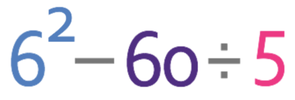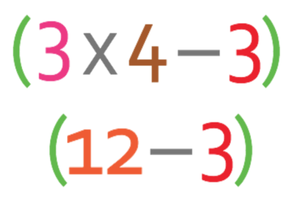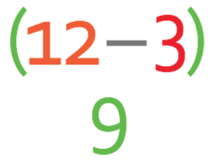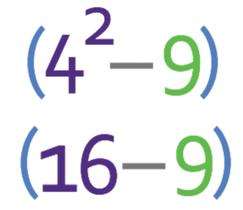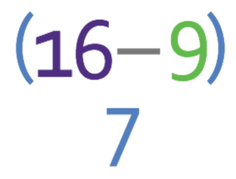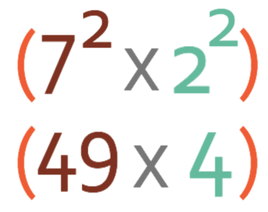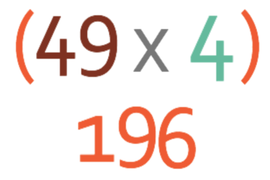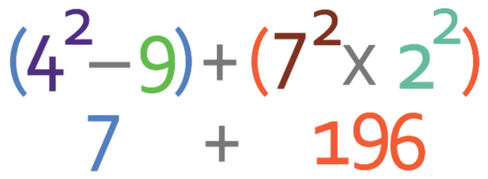1.1 J) BODMAS/ BIDMAS – Part 2
A reminder of what BODMAS stands for is given below:
- Brackets
- Other
- Division
- Multiplication
- Addition
- Subtraction
The letters in BIDMAS mean the same as the letters in BODMAS, except the I in BIDMAS means indices and not other.
Whenever we are working with brackets, we always calculate the value inside the brackets by using BODMAS. If there is a bracket inside another bracket, we calculate the bracket that is inside the other bracket first (see example 2).
Complete the calculation below:
The first step of BODMAS is the B, which stands for brackets. Therefore, we need to calculate what the value is in the first bracket; we need to calculate what 4 + 2 is. We would need to follow the rules of BODMAS for this bracket, but as there is only one operation, we just add 4 and 2 together. The calculation becomes:
As we have dealt with the bracket, we are now able to work through the other components in BODMAS starting with other/ indices; the 62.
We now move on to the division; 60 ÷ 5. The calculation becomes:
We are now onto the M in BODMAS, which is multiplication. There is no multiplication taking place in this calculation, thus meaning that we move on to addition. There is no addition, so we move onto subtraction; 36 – 12.
Therefore, the answer to the calculation is 24.
Complete the calculation below:
There are 3 sets of brackets in the calculation above. There are two sets of brackets on the left and one of the brackets is inside the other bracket. We calculate the bracket that is inside the other bracket first. Therefore, we are going to calculate (3 x 4 – 3) first. We calculate it according to BODMAS. Multiplication comes before subtraction, so we multiply 3 by 4 first. This bracket becomes:
We now move onto the subtraction; 12 – 3, which is 9.
We can sub this into the original calculation.
We now have two separate brackets with no brackets inside either of them. Therefore, we calculate each of the brackets according to BODMAS. Let’s do this for the first bracket first; (42 – 9). We start with the other/ indices; 42.
We are now able to complete the subtraction; 16 – 9.
We now do the same with the second bracket; (72 x 22). We need to complete the other/ indices first; the 72 and 22. This bracket becomes:
We now complete the multiplication; 49 x 4.
Therefore, the second bracket is 196.
We now place the outcome for the first and second bracket back into the calculation; the first bracket is 7 and the second bracket is 196.
We now complete the addition.
Therefore, the answer to this calculation is 203.
Final Notes
You will sometimes need to be careful when you are working out calculations like this on a calculator as some calculators will not follow the rules of BOAMAS. Therefore, it is sometimes easier and more accurate to complete these calculations on paper rather than using a calculator.


